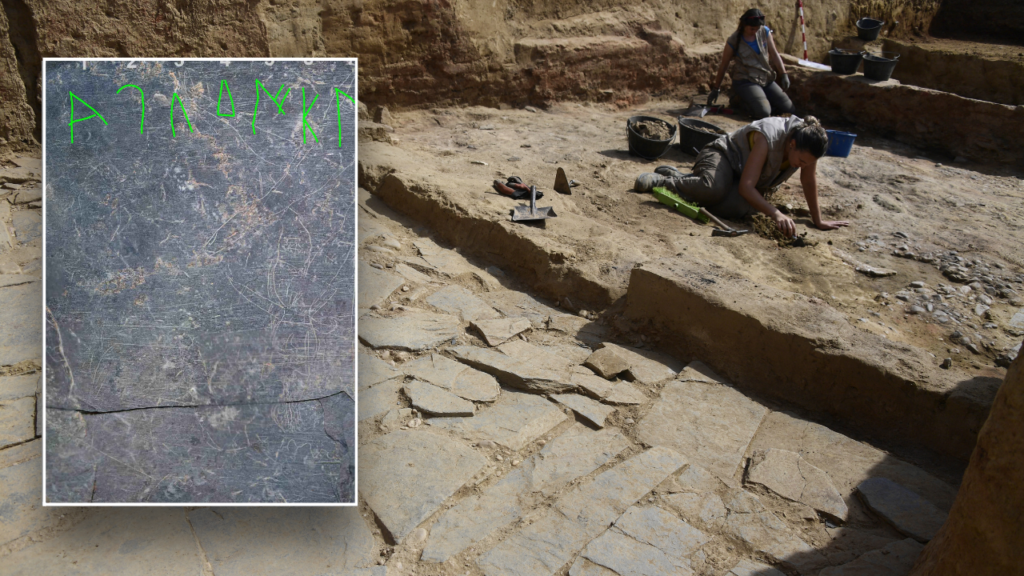Spanish archaeologists have recently made an exciting discovery in the southwestern Spanish province of Badajoz. The researchers uncovered an ancient stone tablet with mysterious symbols carved onto it. These symbols are believed to be part of an ancient alphabet, making this slab the third-ever “southern Paleo-Hispanic alphabet of which there is evidence,” according to the Spanish National Research Council (CSIC). The stone was found at the Casas del Turuñuelo, which are Tartessian ruins dating back to around 600 B.C.
Tartessos was an ancient civilization that once occupied the southern Iberian Peninsula over 3,000 years ago. Despite being considered a “lost” civilization due to the scarcity of remnants, researchers involved in the “Building Tartessus” project have made significant strides in uncovering its history. The primary goal of this project is to characterize Tartessian material culture through the analysis of the adobe buildings found within the ruins.
On the newly discovered stone tablet, experts have identified a sequence of 21 signs appearing within its framework, alongside figures of warriors. Joan Ferrer i Jané, a researcher from the University of Barcelona, recognized the artifact as Tartessian due to the distinct Paleo-Hispanic sign present on one side. This sign, along with other compatible strokes, closely matches a known sequence of signs belonging to an ancient alphabet.
Ferrer explained that the alphabet discovered on the tablet consists of 27 signs, making it the only complete Southern Paleo-Hispanic alphabet known to date. Another partial alphabet was previously found in Villasviejas del Tamuja (Cáceres), but it lacks some central signs. This recent discovery of the third Paleo-Hispanic alphabet could provide valuable insights into the language and communication methods of the ancient Tartessian civilization.
Despite the tablet being incomplete, with at least 6 signs possibly lost in the damaged area, experts believe it originally contained up to 32 symbols. By studying the images on the tablet, the researchers have determined a possible initial sequence of the alphabet as ABeKaTuIKeLBaNS?ŚTaUE. This southern writing system holds the key to unlocking a wealth of information about the ancient Tartessian culture.
The unexpected nature of this thousand-year-old discovery has caught experts by surprise, as the stone tablet offers a rare glimpse into a civilization shrouded in mystery. The archaeological significance of this find cannot be understated, as it sheds light on a little-known culture that thrived in the Iberian Peninsula millennia ago. The ongoing research and analysis of the newly discovered stone tablet promise to unveil more secrets about the ancient Tartessian civilization.












